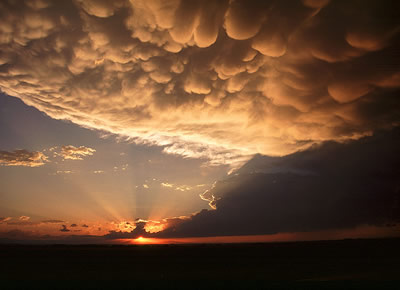This is a photo of mammatus clouds, taken in Weld County, Colorado.
Click on image for full size
Photo courtesy of Gregory Thompson
Mammatus
Mammatus clouds are pouches of clouds that hang underneath the base of a cloud. They are most often associated with cumulonimbus clouds, and they indicate that a storm is particularly strong. These clouds usually form during warm months, and they are formed by descending air in the cloud.
Mammatus clouds have been described as looking like a field of tennis balls or melons, or like female human breasts. In fact, the name "mammatus" comes from the Latin word mamma, or breast, because of this resemblance.
You might also be interested in:

Cumulonimbus (weather symbol - Cb) clouds belong to the Clouds with Vertical Growth group. They are generally known as thunderstorm clouds. A cumulonimbus cloud can grow to such heights that it actually
...more
Weather fronts can cause clouds to form. Fronts occur when two large masses of air collide at the Earth's surface. Warm fronts produce clouds when warm air replaces cold air by sliding above it. Many different
...more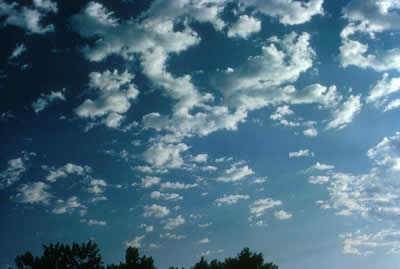
Altocumulus clouds (weather symbol - Ac), are made primarily of liquid water and have a thickness of 1 km. They are part of the Middle Cloud group (2000-7000m up). They are grayish-white with one part
...more
Altostratus clouds (weather symbol - As) consist of water and some ice crystals. They belong to the Middle Cloud group (2000-7000m up). An altostratus cloud usually covers the whole sky and has a gray
...more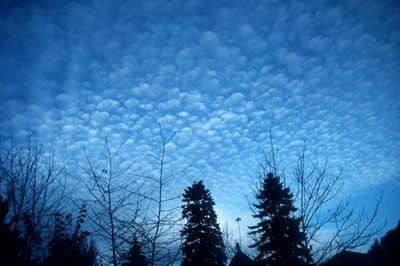
Cirrocumulus clouds (weather symbol - Cc) are composed primarily of ice crystals and belong to the High Cloud group (5000-13000m). They are small rounded puffs that usually appear in long rows. Cirrocumulus
...more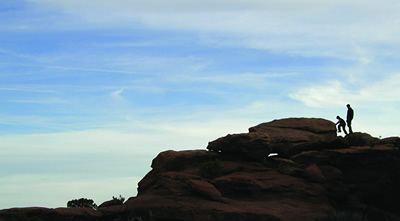
Cirrostratus (weather symbol - Cs) clouds consist almost entirely of ice crystals and belong to the High Cloud (5000-13000m) group. They are sheetlike thin clouds that usually cover the entire sky. The
...more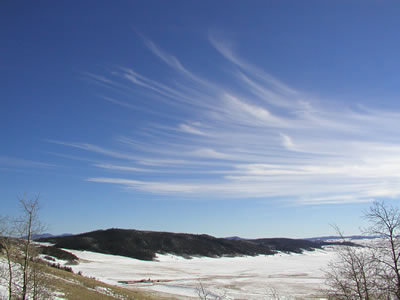
Cirrus (weather symbol - Ci) clouds are the most common of the High Cloud (5000-13000m) group. They are composed entirely of ice and consist of long, thin, wispy streamers. They are commonly known as
...more


